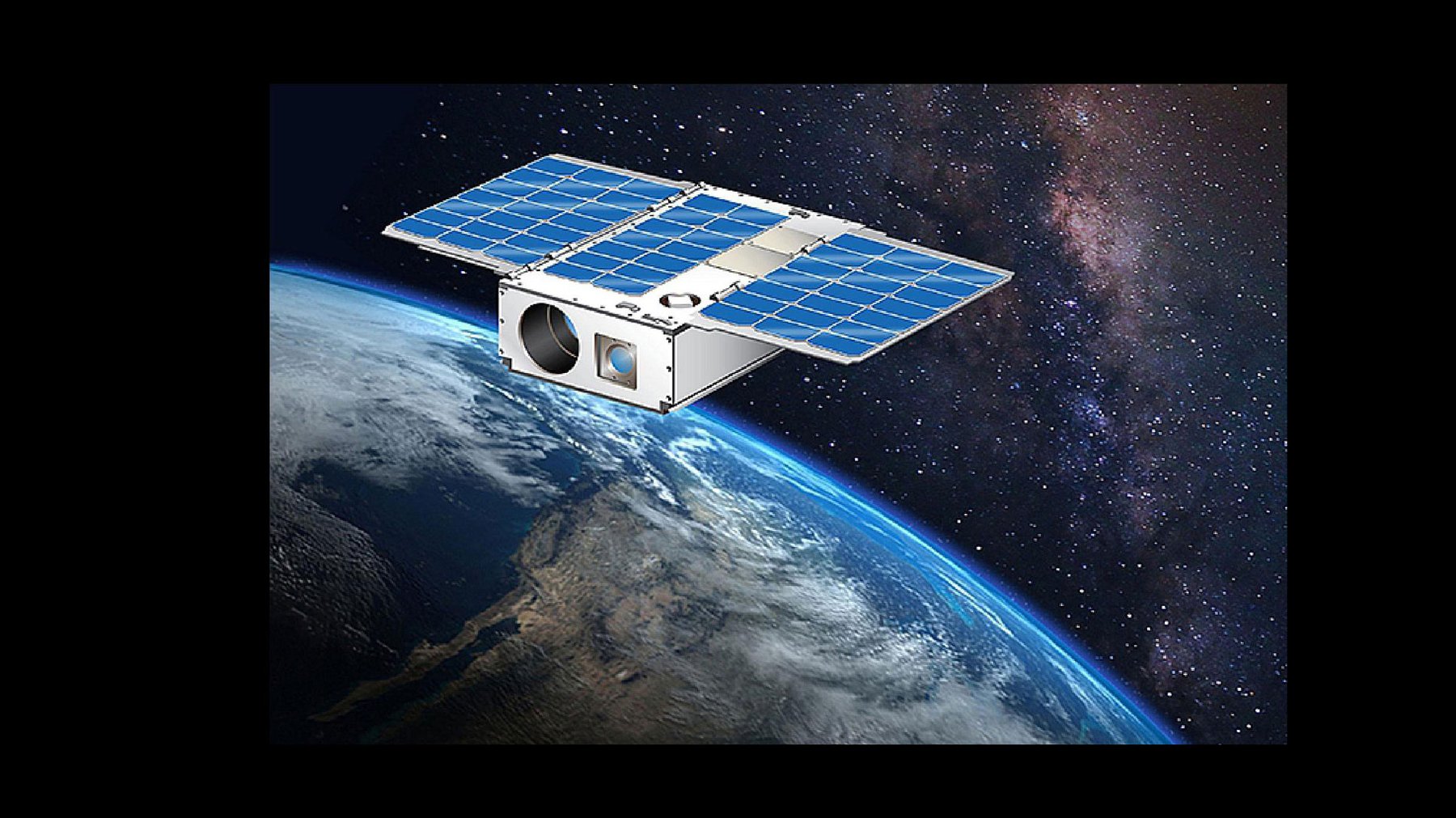Projects
Mexec on ASTERIA

Graphic of the ASTERIA cubesat in Earth orbit (source: JPL)
Background
The traditional form of spacecraft commanding is with sequences that specify when commands should execute based on a schedule generated on the ground. Some sequences have limited control logic and event driven responses to increase flexibility.
An approach to increase autonomy is to use goal-based planning and commanding. Using this paradigm, intention and behavior is modeled on board the spacecraft. In this paper we describe MEXEC (Multi-mission EXECutive), a multi-mission, task-based, onboard planning and execution software designed specifically to be used as flight software.
ASTERIA was a 6U CubeSat developed as a collaboration between the Jet Propulsion Laboratory (JPL) and the Massachusetts Institute of Technology (MIT). It was deployed from the International Space Station on November 20, 2017 for a 90-day prime mission to demonstrate precision photometry technology. It successfully achieved all of its primary mission goals of pointing stability, thermal stability, and photometric capability and subsequently was used as a “testbed in the sky” for technology demonstrations.
Technology
MEXEC (Multi-mission EXECutive), is a multi-mission, goal-based, onboard, integrated planning and execution software that uses task networks (Verma et al. 2017; Troesch et al. 2019). With MEXEC, since an operator specifies a goal where the intent is maintained through a network of tasks, it is possible to increase science return and improve robustness compared to sequences, as well as respond to anomalies without safing the spacecraft.Impact
As a path to infusion for future flight projects, two experiments were developed targeting the ASTERIA CubeSat and testbed that demonstrate that MEXEC can be integrated and used for spacecraft operations and increase robustness and science return compared to the standard sequences that were being used.
The experiments that were performed on the ASTERIA CubeSat and testbed show that MEXEC can be integrated into existing flight software and be used for operations, as well as enable robustness and fail-operational commanding.
The onboard experiment demonstrated successful integration of the MEXEC software into the ASTERIA flight software and replication of the behavior of the standard ASTERIA sequences for operations.
The second experiment, performed on the ASTERIA testbed, demonstrated how MEXEC goal-based operations could benefit the ASTERIA mission’s momentum management by monitoring momentum, dumping momentum when necessary, and recovering without reaching fault protection limits. This would prevent the spacecraft from going into safe mode, therefore allowing it to recover and possibly continue science observations as well as take passes without reset recovery procedures. This would also potentially allow operators to generate less conservative observation schedules to increase the number of observations or increase observation quality. Additionally, had contact not been lost with ASTERIA, operations would have continued as the spacecraft lost altitude and therefore also attitude control. The ground tools would have been less reliable in predicting momentum for observations and MEXEC could have prevented unnecessary occurrences of entering safe mode.
Status
The onboard experiment using Mexec for sequence-based operations was successfully flown in September 2019.
The second experiment for goal based operations was unable to be demonstrated in flight due to the loss of the ASTERIA spacecraft in December 2019. It was demonstrated in the ASTERIA testbed in Spring 2020.
Publications
Team
Martina TroeschFaiz Mirza
Kyle Hughes
Ansel Rothstein-Dowden
Robert Bocchino
Amanda Donner
Martin Feather
Benjamin Smith
Lorraine Fesq
Brian Barker
Brian Campuzano
